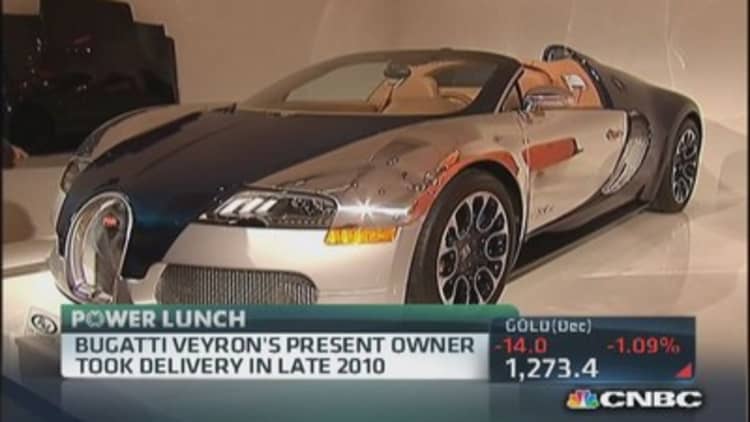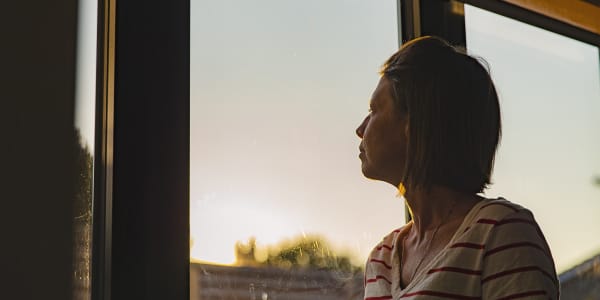Geoff Mosher and his wife, Jessica, of Redlands, Calif., recently paid 10 cents for an old stamp at a local collectibles shop because it looked interesting. Not long after, they sold the stamp for $200, netting a 199,900 percent return.
"It turned out to be one of Italy's earliest stamps," said Mosher, who evaluates stamps for Professional Stamp Experts, an appraisal firm in Santa Ana, Calif.
The Moshers are not alone in profiting from stamps as an investment.
Bill Bergstrom of the Tustin, Calif., auction house H.R. Harmer, GPN, has witnessed a growing interest in stamp collecting.
"In general, stamps are in that tangible asset class," Bergstrom said. "Interest rates are so low in, say, money market funds. But if you get a rare stamp that has demand and popularity, you can generally see between a 5 percent and 20 percent yield over time."
Read MoreInvestors snap up collectible toys
Indeed, right now the seven-day average yield on money market mutual funds hovers around 0.01 percent, according to the Money Fund Report from iMoneyNet.
Bergstrom added, however, that investing in stamps typically means holding on to them for five to 10 or 15 years. "It's not a get-rich-quick thing, but it can have a more solid rate of return than some more traditional investments," he said.
Catherine Valega, a certified financial planner and chartered alternative investment analyst, said she has seen clients' frustration with the traditional market growing.
"I can see the appeal of someone wanting something that is tangible—something they can put their hands on," said Valega, owner of Green Bridge Wealth Management. "I've been seeing people becoming more interested in esoteric investments."
Mosher said he and his wife view their collection as both a hobby and an investment.
"I'd never want to sell the entire collection—that would defeat the purpose of collecting," Mosher said. "But I can see us continuing to sell off individual ones that have value."
Read More Gay couples should ponder finances first
Also in the Moshers' collection are Disney-related stamps. The two have an annual pass to Disneyland in Anaheim, Calif., and had already been amassing certain Disney-themed collectibles. So focusing on Disney in stamps seemed like a natural transition.
Scott Murphy, president of Professional Stamp Experts, said he sees more people taking up stamp collecting with a focus on a topic.
"The older generation often were interested in the history [associated] with the stamps," Murphy said. "Nowadays, people tend to get interested through topics and it's less about history."

Murphy said that topic-related collections generally start out with little value, but the hope is that, over time, at least a few of the stamps will develop worth.
Of course, while the Moshers profited from that single stamp, their $200 return pales in comparison to some rare stamps.
In May, H.R. Harmer will auction off a stamp expected to go for about $250,000, Bergstrom said. It last sold in a 2003 private auction for $90,000.
Read MoreAMT hasn't lost its bite
The stamp is an Inverted Jenny, which is probably the best-known U.S. stamp. Issued in 1918, the 24-cent stamp features an image of a biplane upside down—a printing error that resulted in 100 flawed stamps. The one getting auctioned off is in a gold locket, which was given by Colonel E.H.R. "Ned" Green to his wife, Mabel, in 1918.
Bill Gross, well known on Wall Street as the co-founder of bond firm Pacific Investment Management, is also a stamp collector. Included in his collection are four Inverted Jennys that are on loan to the Smithsonian Institution in Washington, D.C., to which he gave $10 million to help establish the William H. Gross Stamp Gallery.
In June ... the so-called Mona Lisa of the stamp world ... will fetch between $10 million and $20 million, according to Sotheby's.
Although Gross was unavailable for an interview, published reports show he has benefited from his hobby. He has auctioned off some of his valuable collection, with the proceeds going to charities.
Bergstrom said the most valuable stamps typically are sold privately and go for several million dollars each.
Read MoreWhere there's a will, there's a way
Meanwhile, in June a British Guiana One-Cent Magenta stamp dating from 1856—the so-called Mona Lisa of the stamp world—will be on the block at auction house Sotheby's in New York. It's estimated that the stamp, with a face value of just a penny, will fetch between $10 million and $20 million, according to Sotheby's.
Ninety-nine percent "of all stamps issued around the world are not … worth investing in," Murphy said. "But that 1 percent is. They are older and have a pedigree."





